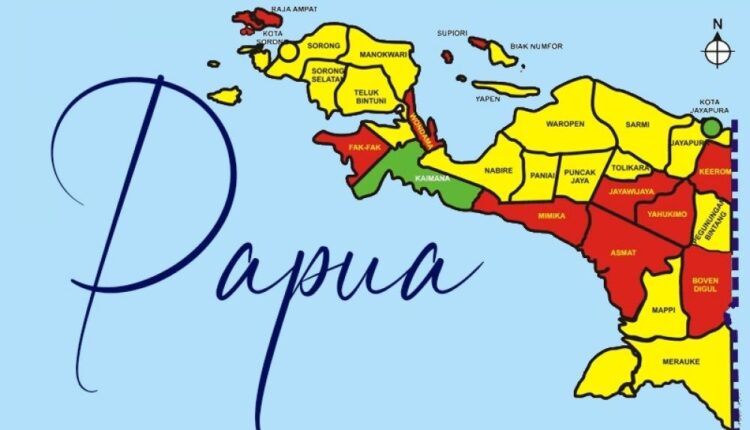Infrastructure Development in Papua Facilitates Regional Access and Connectivity
By: Julvri Liben )*
Infrastructure development in Papua is a strategic step to improve access and connectivity in the region, especially considering the unique geographical conditions and challenges faced by this region. The Papua region has a variety of challenging natural conditions, including mountains, dense forests, and wide rivers. For years, limited infrastructure has been a barrier to the economic and social development of the local community. However, with the increasingly intensive infrastructure development by the government of President Joko Widodo, accessibility in Papua has undergone a positive transformation.
The acceleration of development in Papua that is being implemented clearly has a great influence on the development of economic, social, cultural and political life there. The community sees how much the government cares about aligning Papua and other regions both in terms of infrastructure and public services, so the initial touch that is done is improving infrastructure accompanied by improvements in every sector of public services.
Coordinating Minister for Human Development and Culture (Menko PMK), Muhadjir Effendy said the government continues to build infrastructure to improve the welfare of the Papuan people. With better infrastructure, access to health, education, and economic services becomes easier. Roads, bridges, and public facilities that are built can open up opportunities for local economic development, increase mobility, and facilitate the distribution of goods and services.
One of the main focuses of infrastructure development in Papua is the construction of roads and bridges. The Trans-Papua Road, for example, is a development project that aims to connect various districts or cities in Papua. With the existence of this road, the transportation of goods and people becomes easier, thus encouraging local economic growth. Before the Trans-Papua Road, travel between regions often took a long time and required high costs. Now, with better road access, farmers can bring their crops to market more efficiently, increasing their income and standard of living.
In addition to roads, the construction of airports and ports is also a priority in efforts to improve connectivity in Papua. New airports built in various regions make it easier for people to travel between cities, both for business and education. This is very important considering that Papua has a number of remote and difficult-to-reach areas. The ports that are built also help to facilitate the distribution of goods and services, so that they can support the local trade sector. With better connectivity, investment from outside the region begins to flow, providing job opportunities and improving people’s welfare.
Not only that, infrastructure development in Papua also includes the provision of basic services such as electricity and clean water. Many areas in Papua previously did not have access to these basic services. Through the program of providing electricity from renewable energy sources, such as solar and water, many villages now enjoy better lighting, allowing economic activities at night. In addition, the provision of clean water helps reduce health problems that often occur due to lack of access to clean water. Thus, infrastructure development does not only focus on physical connectivity, but also on improving the quality of life of the community.
In addition, infrastructure development also has a significant social impact. With the existence of roads, bridges, and other public facilities, interaction between community members increases. This encourages cooperation between communities and strengthens a sense of togetherness. Previously isolated communities can now participate in various social, cultural, and economic activities. The existence of good infrastructure also opens up opportunities for communities to access better education and health services. Children in remote areas can now access schools more easily, while communities can get health services without having to travel very far.
Meanwhile, Acting Governor of West Papua, Ali Baham Temongmere said that the community must realize the importance of joint collaboration in supporting long-term development in Papua. In the context of development, attention is needed for economic growth and justice to reach remote areas. In addition, it is important to synergize in welcoming the future and a positive legacy for the next generation in Papua. Then, in addition to infrastructure development, the government continues to intensify the development of Papuan Human Resources (HR) to improve the economy and welfare of the Papuan people.
On the other hand, massive infrastructure development also requires significant investment. Therefore, collaboration between the government, private sector, and international institutions is very important. This collaboration can create a more sustainable financing scheme and support inclusive development. Thus, the Papuan people are not only spectators, but can also play an active role in the development process.
Overall, infrastructure development in Papua has a significant impact on improving access and connectivity in the region. With roads, bridges, airports, ports, and other basic services, the Papuan people can feel positive changes in their daily lives. This development is not just a physical project, but also an effort to improve welfare, strengthen social ties, and open up opportunities for a better future. With continued investment and attention to sustainable infrastructure development, Papua has great potential to develop and become an integral part of the progress of the Indonesian nation.
)* The author is a Papuan student living in Yogyakarta
